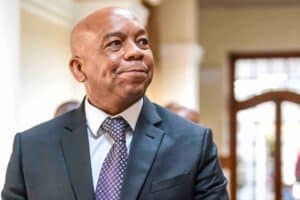Questions have been raised about why Eskom continues to supply other countries with electricity when it cannot meet its own demand

With the country suffering with chronic load shedding, questions have been raised about why Eskom continues to supply other countries with electricity when it cannot meet its own demand.
Eskom on Tuesday warned South Africans to brace themselves for longer periods of load shedding during the power utility’s operating performance and the state of load shedding briefing.
South Africans have so far endured an excruciating 160 days of load shedding this year with no end in sight as Eskom continues to experience what it called “capacity challenges”.
Other countries prioritized over South Africa?
While South Africans continue to suffer the deliberate power cuts, the ailing parastatal said the impact of the rolling blackouts are also affecting its international customers.
Eskom has longstanding contracts to supply electricity to Southern African countries including Lesotho, Swaziland, Nambia, Mozambique, Botswana and Zimbabwe.
Managing director for transmission Segomoco Scheepers said South Africa remains in a very difficult space and the outlook has been exacerbated by recent events.
ALSO READ: City of Joburg loses R300m a day due to load shedding
Payments up to date
Scheepers said there is no truth that Eskom is prioritising its international customers over South Africa.
“In the event that we have constraints such as we do, the requirement is built into the contracts that that country has to reduce proportionately from what they are taking from us.”
“So, they also feel the pain that we are actually feeling here at home. We do not believe it would be prudent [to] renege [any] of our contracts, but as we stand, we share the pain,” said Scheepers.
Scheepers said with the exception of Mozambique, all of Eskom’s international customers are up to date with their payments for electricity supply.
Who’s to blame for power crisis?
Last year, Freedom Front Plus leader Pieter Groenewald said South Africa’s power crisis was the direct result of supplying power to neighbouring countries, like Zambia and Zimbabwe, at the expense of South Africa, corruption under Black Economic Empowerment (BEE) and incompetent officials.
Groenewald said Eskom CEO André de Ruyter describing the power utility’s situation as a ‘dead horse’ confirms the dire situation in which the power utility currently found itself.
“It could be inferred from De Ruyter’s explanation of the problems currently experienced by Eskom this afternoon that South Africa has basically been forced to come to a standstill in order to keep neighbouring countries up and running while the country’s power grid is collapsing on various fronts,” said Groenewald.
More load shedding in 2023
Meanwhile, Scheepers has painted an extremely grim load shedding picture for 2023.
“If one looks at the outlook, September 2022 to August next year, we assume breakdown and unavailability of up to 13,000MW. In that case, we have a number of days of load shedding we envisage between now and the end of March as well as into winter which starts for us 1st of May.”
Scheepers said if the demands exceed the 13 000MW, load shedding will be implemented every month and different stages.
No money for diesel
Seven months into its current financial year, Eskom has already exceeded its R11bn diesel budget by about R1bn, which means that for the next few months it will struggle to afford to run its diesel-powered emergency generation fleet.
Eskom COO Jan Oberholzer warned that the utility was now in the “difficult position” where it is forced to implement load shedding because it does not “have the money to burn diesel at the rate [it] has been doing up to now.”
Watch the Eskom briefing here:
ALSO READ: ‘2022 most intensive load shedding year to date’ – CSIR






